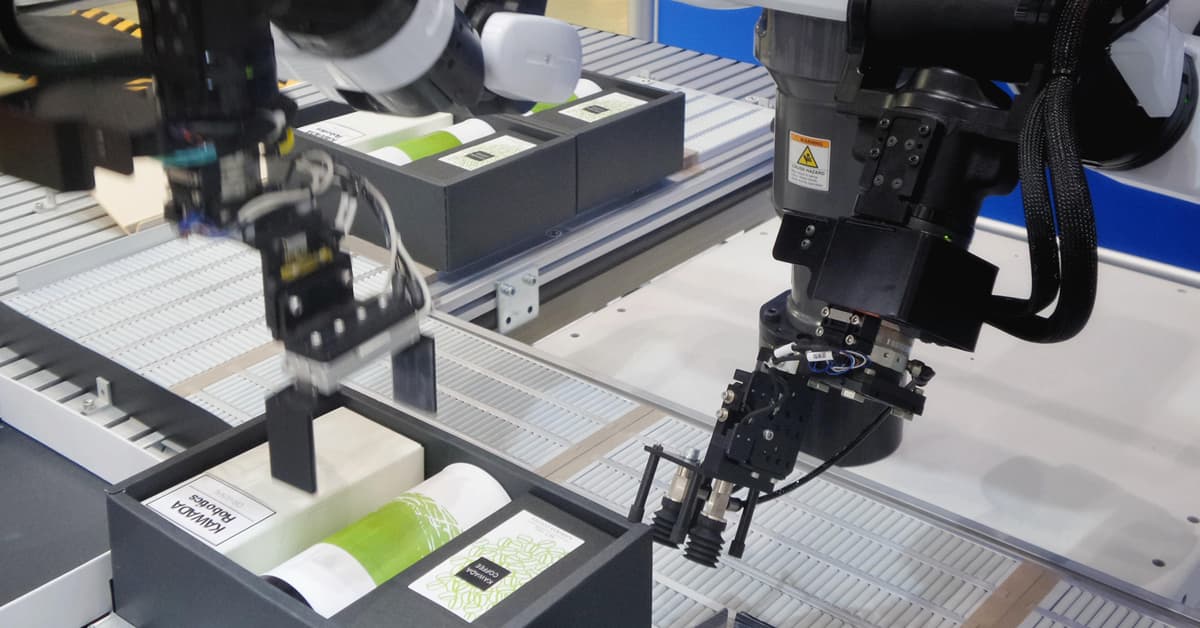 Picture Credit: Unsplash
Picture Credit: Unsplash
Warehouses are incorporating robots to perform simple and repetitive tasks. This trend is spreading in many industries, from manufacturing to retail, at an accelerated rate - so much so that Gartner predicts demand for robotic goods-to-person systems will quadruple through 2023.
Robotic solutions in the warehouse space offer several advantages. Via autonomous motors and vision capabilities, these robots can move supplies and merchandise in boxes and entire pallets unaided as they are processed and prepared for shipping. Believe it or not, they can climb shelves, navigate small storage spaces, and even fly. If this sounds rather science-fictiony, here are some videos that demonstrate robot use designed for warehouses, whether stationary, mobile, or using drones. We are sure you’ll agree that watching these videos makes even simple or repetitive tasks seem kind of fun.
8 Cool Warehouse Robots in Use
Self-propelled Pallet Pusher
Here the MiR1000, an Automated Mobile Robot (AMR), performs classic warehouse logistics, maneuvering a stack of pallets from the loading dock to a predetermined location to then hand them off to a forklift operator.
Articulated Arms for Loading Pallets
This example is pretty cool because it involves a trickier handling element. Working with the heavy sacks is much more difficult than stacking rigid boxes onto a pallet. Bastian Solutions mechanical arm (or commonly referred to as an “industrial robot”) uses a “clam-style” gripper to pick up 80-lb bags and place them onto a pallet at a rate of up to 20 per minute.
Shelf-climbing AMR
The very basis of fulfillment is picking, which in the warehouse world means collecting items from their bins or shelves so that they can be bundled and prepared for delivery to the consumer. Bionic Hive’s "Squid" finds the correct shelving unit, adjusts its wheels to find the pre-installed rails, cruises vertically to the proper shelf, and then scoots over to collect the item where it sits.
Robot-Only Storage
If the robots are so good, it begs the question: what if humans are not needed in certain storage spaces? For smaller items, for instance, could shelving systems be of any height? If no humans are required, could paths be small enough for little robots instead of walkways or be eliminated altogether?
The answer is yes to all the above questions; this system already exists and is called Automated Storage/Retrieval System (AS/RS). It deploys custom-designed robots that route and deliver items to space-optimized shelves and bins where they are retrieved on command. Therefore, warehouse organizations can save by combining, sorting, and picking functions; plus, they can save on climate control because they can be unheated, uncooled, and unlit as the stored items permit.
Bastian Solutions Autostore
This system ensures that no space is wasted between the bins. The robots can access them from above and easily move onto other bins out of the way as needed.
OPEX Perfect Pick
This system uses a series of vertical racks traversed by “ibots” — a type of robotic tray that moves vertically and horizontally to deliver and retrieve items.
Tennessee State Library
The state of Tennessee has been using ASRSS for their archives. Here the State of Tennessee stores its delicate archives in a climate-controlled vault in one-seventh of the space needed for human-accessible stacks.
Drones for Inventory
Inaccurate inventorying can cost losses in time, effort, and above all, the bottom line. For this reason, warehouses periodically perform inventory audits, which also costs money, take several workdays to complete, and can be prone to errors.
Deploying barcodes or RFID tags scanning drones can streamline this process. They can quickly fly to the highest stacks to scan, read, and confirm items faster than human workers. As a result, full inventory can be performed every few weeks instead of taking several days manually every six months.
Kimberly-Clark in Russia
Drone inventorying can use human workers to fly their drones. These fully automated drones made by Infinium can launch themselves on set schedules.
Key Takeaways
Warehouse automation, like all automation, seeks to increase efficiency while saving money. This is done when time-consuming and repetitive tasks are replaced either through software and machines (robots). Software programs can identify the most efficient way for picking routes as staff move around the warehouse to monitor and confirm so that smart barcode-enabled conveyor belts can then direct those packages to different locations within the warehouse.
The example above has been how many warehouse companies have deployed automation. The use of autonomous machines and robots promises an expansion of these capabilities by reducing human traffic and the space needed for human and larger manual machinery, simply by deploying smaller and more mobile robots that can move, read barcodes, and avoid obstacles quicker. A 2020 report from Gartner identifies such “autonomous things” as a top tech trend. Certainly, investing in robotic solutions may not be attainable for all companies. Still, a growing segment of the market offers Robot as a Service (RaaS) as a financial model. With RaaS, the buyer pays for the use of the physical device through a subscription-based contract and does not have to purchase robots outright. Offerings like this reduce the entry-level price point possible for companies that could not permit such an expense.
How Nisum Can Help
If you are a senior transformation leader in mid-to-large enterprise companies that need nimble solutions to achieve higher efficiencies for your day-to-day operations, look no further than Nisum’s Business Agility and Digital Solutions teams. We can provide you with experienced partners and developers who orchestrate measurable, holistic, and Agile transformation, all anchored through seamless cultural change that enables technology excellence.
We build sustainable leadership practices that help leaders continuously develop and transform themselves. We also offer leadership development programs to our employees, who help several clients achieve their business results, increase productivity and efficiency.
Use our free Agile Maturity Assessment to gauge and identify any Agile processes that are not working and receive your business’ maturity level feedback. Then, as needed, review our Nisum Enterprise Agile Framework (NEAF) to see how it will help your organization effectively roll out an Agile culture. Our sustainable framework empowers organizations to transform their mindset and culture to think and nimbly adapt to whatever changing markets demand.
To learn more about how Nisum can develop leaders and implement leadership best practices across teams, programs, and portfolios for your organization, contact us.





